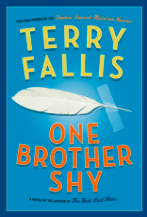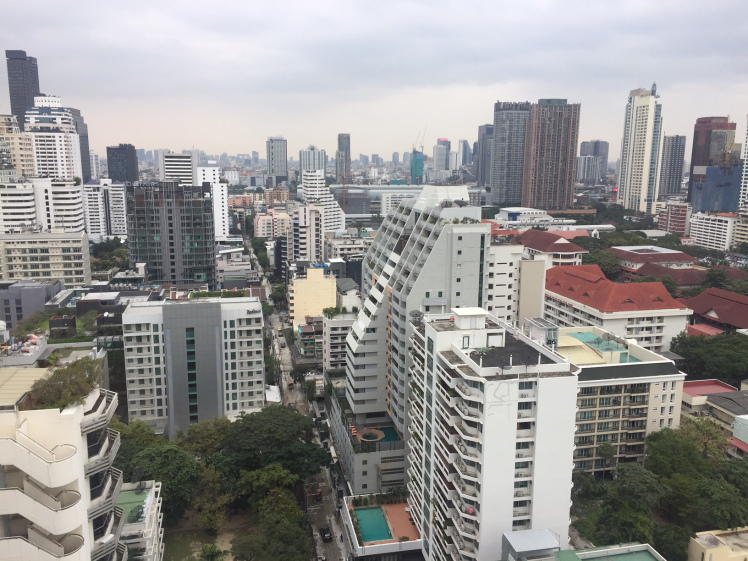
by NONA BLYTH CLOUD
Recognition. A word that can mean someone’s work has been honored, ‘recognized’ for excellence, but also can mean that moment when a person feels a lighting strike of connection to an artist’s work, whatever the media – that “Oh YES” that is beyond mere liking, but is instead kinship.
Kay Ryan (1945 – ) worked out her own distinctive style with little regard for how her contemporaries were doing poetry. Her method of becoming a poet is unlike any I’ve come across before. After briefly working toward a PhD in Literary Criticism, she decided she didn’t want to be “a doctor of something I couldn’t fix.” So in 1976, she set out on a 4,000-mile bicycle trip along backroads in the Western U.S. as a time to decide if she wanted to be a writer.
Ryan took a deck of Tarot cards with her, and each morning she shuffled the cards, turned one card up, and wrote a poem about whatever the card represented. Some cards came up multiple times, and others not at all. Ryan says this process gave her the habit of writing, range, and a way to deal with exposing herself. “If one is writing well, one is totally exposed. But at the same time, one has to feel thoroughly masked or protected.”
While the trip taught her that writing gave her “pleasure like nothing else,” she still had no real idea of how to go about becoming a poet. She used the Ripley’s Believe It or Not! books as her next inspiration, which taught her to “utilize the fanciful.” After writing “a gazillion” poems, in 1983 she self-published her first collection, Dragon Acts to Dragon Ends.
__________________________________________________________
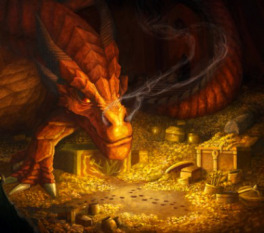
To the dragon
any loss is total.
His rest is disrupted
if a single jewel encrusted
goblet has been stolen.
The circle of himself
in the nest of his gold
has been broken.
No loss is token.
___________________________________________________________
___________________________________________________________
GREEN BEHIND THE EARS
I was still slightly
fuzzy in shady spots
and the tenderest lime.
It was lovely, as I
look back, but not
at the time. For it is
hard to be green and
take your turn as flesh.
So much freshness
to unlearn.
FLOAT ON PURE WATER —Ripley’s Believe It or Not
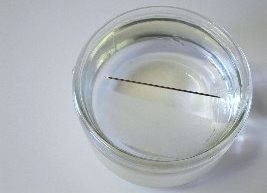
Who hasn’t seen
a plain ordinary
steel needle float serene
on water as if lying on a pillow?
The water cuddles up like Jell-O.
It’s a treat to see water
so rubbery, a needle
so peaceful, the point encased
in the tenderest dimple.
It seems so simple
when things or people
have modified each other’s qualities somewhat;
we almost forget the oddity of that.
__________________________________________________________
Kay Ryan was born in San Jose, California. She has talked about her childhood home being a place of silence, where “being a poet would be thought of as putting on airs.”
Ryan uses malapropisms and clichés, usually avoided by modern poets. She also employs what she calls “recombinant rhyme”— hidden rhymes that appear in the middle, rather than at the end of her short lines. There’s a playfulness intermingled with depth which sets her work apart.
Though she has been called an ‘outsider’ and ‘iconoclast,’ Ryan had her first brush with professional recognition after the publication of her second book, Flamingo Watching. It was nominated for the 1995 Lenore Marshall Prize, and she received an award from the Ingram Merrill Foundation. Her poems began appearing in The New Yorker, Poetry magazine, Paris Review, Pushcart anthologies, and other prestige publications. Ryan gives the credit for that to her long-time partner, Carol Adair. Ryan describes the process: “She said, ‘Tell me some magazines you’d like to be in. Okay. Tell me the poems you think are worth sending out.’ And she would put them in groups, send them out, and she did it dispassionately, and she said, ‘If we get in one magazine out of a hundred, that’s great.'”
THIS LIFE
It’s a pickle, this life.
even shut down to a trickle
it carries every kind of particle
that causes strife on a grander scale:
to be miniature is to be swallowed
by a miniature whale. Zeno knew
the law that we know: no matter
how carefully diminished, a race
can only be half finished with success;
then comes the endless halving of the rest
the ribbon’s stalled approach, the helpless
red-faced urgings of the coach.
__________________________________________________________
In this poem, she seems almost to feel nostalgia for her anonymity prior to Flamingo Watching:
IDEAL AUDIENCENot scattered legions,
not a dozen from
a single region
for whom accent
matters, not a seven-
member coven,
not five shirttail
cousins; just
one free citizen,
maybe not alive
now even, who
will know with
exquisite gloom
that only we two
ever found this room.
_________________________________________________________
By the year 2004, she had published five books, and recognition was coming faster. Ryan was awarded a Guggenheim Fellowship for Creative Arts, and the Ruth Lily Poetry Prize, one of the most illustrious honors given to American poets, in recognition of an outstanding body of work.
_________________________________________________________
Here, she plays with limelight, and limes:
LIME LIGHTOne can’t work by
lime light.
A bowlful
right at
one’s elbow
produces no
more than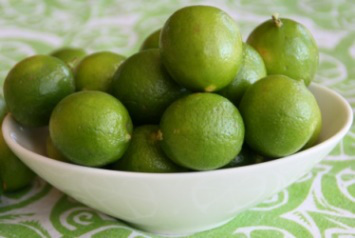
a baleful
glow against
the kitchen table.
The fruit purveyor’s
whole unstable
pyramid
doesn’t equal
what daylight did.
_________________________________________________________
She has a knack for making us see ordinary things differently.
SPIDERWEB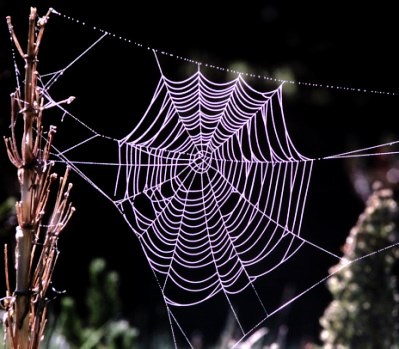
From other
angles the
fibers look
fragile, but
not from the
spider’s, always
hauling coarse
ropes, hitching
lines to the
best posts
possible. It’s
heavy work
everyplace,
fighting sag,
winching up
give. It
isn’t ever
delicate
to live.
__________________________________________________________
THE LIGHT OF INTERIORSThe light of interiors
is the admixture
of who knows how many
doors ajar, windows
casually curtained,
unblinded or opened,
oculi set into ceilings,
wells, ports, shafts,
loose fits, leaks,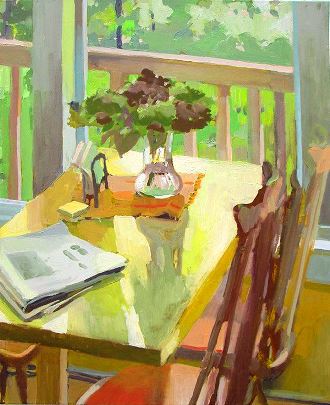
and other breaches
of surface. But, in
any case, the light,
once in, bounces
toward the interior,
glancing off glassy
enamels and polishes,
softened by the scuffed
and often-handled, muffled
in carpet and toweling,
buffeted down hallways,
baffled equally
by scatter and order
to an ideal and now
sourceless texture which,
when mixed with silence,
makes of a simple
table with flowers
an island.
__________________________________________________________
DOUBTA chick has just so much time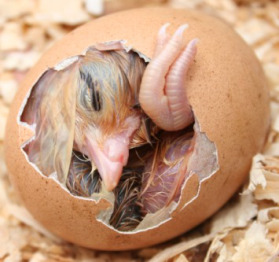
to chip its way out, just so much
egg energy to apply to the weakest spot
or whatever spot it started at.
It can’t afford doubt. Who can?
Doubt uses albumen
at twice the rate of work.
One backward look by any of us
can cost what it cost Orpheus.
Neither may you answer
the stranger’s knock;
you know it is the Person from Porlock
who eats dreams for dinner,
his napkin stained the most delicate colors.
_____________________________________________
THAT WILL TO DIVESTAction creates
a taste
for itself.
Meaning: once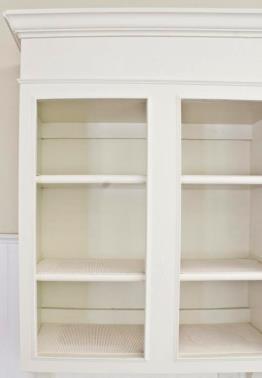
you’ve swept
the shelves
of spoons
and plates
you kept
for guests,
it gets harder
not to also
simplify the larder,
not to dismiss
rooms, not to
divest yourself
of all the chairs
but one, not
to test what
singleness can bear,
once you’ve begun.
__________________________________________________________
THE BEST OF ITHowever carved u
or pared down we get,
we keep on making
the best of it as though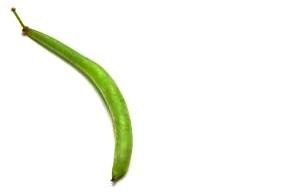
it doesn’t matter that
our acre’s down to
a square foot. As
though our garden
could be one bean
and we’d rejoice if
it flourishes, as
though one bean
could nourish us.
___________________________________________________________
Ryan says she prefers not to read fellow poets because, “Like eucalyptus trees, they poison the soil beneath them so nothing else can grow there.” But here, she runs counter to Emily Dickinson’s most famous poem.
HOPEWhat’s the use
of something
as unstable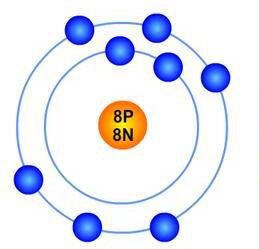
and diffuse as hope—
the almost-twin
of making do,
the isotope
of going on:
what isn’t in
the envelope
just before
it isn’t:
the always tabled
righting of the present.
__________________________________________________________
Even with the awards and fellowships, Ryan was still thought of as an ‘outsider.’ I think it was partly geographical. There are a number of well-thought-of presses on the West Coast, but New York is still the center of U.S. publishing. Ryan’s fourth book was the first one published by New York-based Grove Press. Another element was academic. Unlike other American poets, she was teaching remedial English at a community college.
So she was very surprised when she was asked to be the U.S. Poet Laureate in 2008.
“I felt completely unequal to the task. I thought, no, never in a million years . . . I have lived a life that hasn’t, intentionally hasn’t required me to opine about poetry very much, or to represent poetry. I’ve found it comfortable to represent my own poetry. I feel confident talking about it and thinking about it, but I feel really shaky when I have to generalize beyond my own private, selfish, obsessive interests.”
In spite of her self-doubts, and the diagnosis of her partner, Carol, with advanced stage cancer, she accepted, and emphasized the value of community colleges during her tenure. Adair died in 2009, during Ryan’s second term.
__________________________________________________________
LOSSESMost losses add something—
a new socket or silence,
a gap in a personal
archipelago of islands.
We have that difference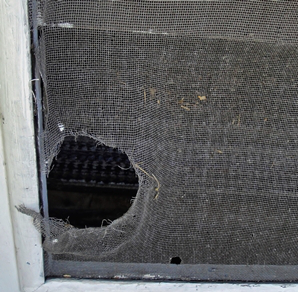
to visit—itself
a going-on of sorts.
But there are other losses
so far beyond report
that they leave holes
in holes only
like the ends of the
long and lonely lives
of castaways
thought dead but not.
__________________________________________________________
THINGS SHOULDN’T BE SO HARDA life should leave
deep tracks:
ruts where she
went out and back
to get the mail
or move the hose
around the yard;
where she used to
stand before the sink,
a worn-out place;
beneath her hand
the china knobs
rubbed down to
white pastilles;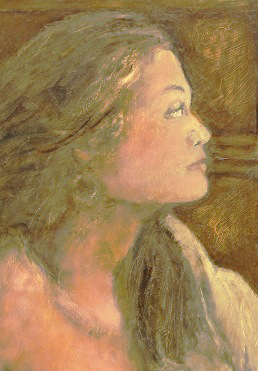
the switch she
used to feel for
in the dark
almost erased.
Her things should
keep her marks.
The passage
of a life should show;
it should abrade.
And when life stops,
a certain space—
however small—
should be left scarred
by the grand and
damaging parade.
Things shouldn’t
be so hard.
__________________________________________________________
POLISH AND BALMDust develops
from inside
as well as
on top when
objects stop
being used.
No unguent
can soothe
the chap of
abandonment.
Who knew
the polish
and balm in
a person’s
simple passage
among her things.
We knew she
loved them
but not what
love means.
__________________________________________________________
NOTHING VENTUREDNothing exists as a block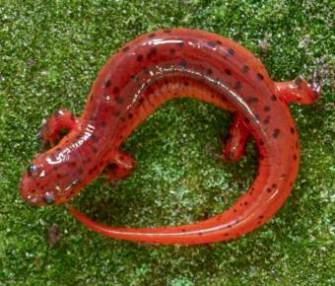
and cannot be parceled up.
So if nothing’s ventured
it’s not just talk;
it’s the big wager.
Don’t you wonder
how people think
the banks of space
and time don’t matter?
How they’ll drain
the big tanks down to
slime and salamanders
and want thanks?
__________________________________________________________
HOME TO ROOSTThe chickens are circling
and blotting out the day.
The sun is bright,
but the chickens are in the way.
Yes, the sky is dark with chickens,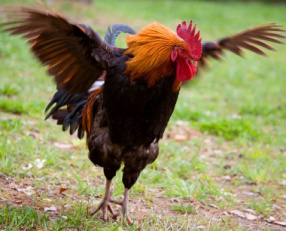
dense with them.
They turn and then they turn again.
These are the chickens you let loose
one at a time and small—
various breeds.
Now they have
come home to roost
—all the same kind
at the same speed.
__________________________________________________________
THE EDGES OF TIMEIt is at the edges
that time
thins.
Time which had been
dense and viscous
as amber suspending
intentions like bees
unseizes them. A
humming begins,
apparently
coming
from stacks of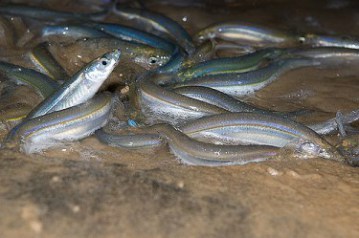
put-off things or
just in back. A
racket
of claims now,
as time flattens. A
glittering fan of things
competing to happen,
brilliant and urgent
as fish when seas
retreat.
__________________________________________________________
WHY WE MUST STRUGGLEIf we have not struggled
as hard as we can
at our strongest
how will we sense
the shape of our losses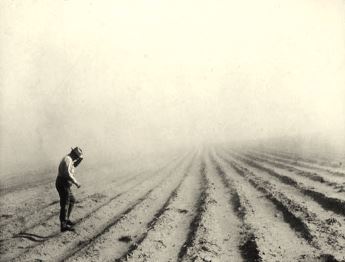
or know what sustains
us longest or name
what change costs us,
saying how strange
it is that one sector
of the self can step in
for another in trouble,
how loss activates
a latent double, how
we can feed
as upon nectar
upon need?
__________________________________________________________
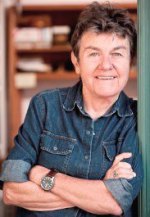 No matter how many labels critics have tried to stick on Kay Ryan, she remains what she’s always been, an original. That so many readers have had that ‘click’ of recognition when reading her poems is a tribute to Ryan’s gift for writing extraordinary poems about the ‘ordinary’ things in life.
No matter how many labels critics have tried to stick on Kay Ryan, she remains what she’s always been, an original. That so many readers have had that ‘click’ of recognition when reading her poems is a tribute to Ryan’s gift for writing extraordinary poems about the ‘ordinary’ things in life.
__________________________________________________________
Sources- Academy of American Poets: https://www.poets.org/poetsorg/poet/kay-ryan
- Grace Cavalieri: https://www.gracecavalieri.com/poetLaureates/kayRyan.html
- Library of Congress: https://www.loc.gov/rr/program/bib/ryan/
- National Endowment for the Humanities: https://www.neh.gov/about/awards/national-humanities-medals/kay-ryan
- Paris Review: https://www.theparisreview.org/interviews/5889/kay-ryan-the-art-of-poetry-no-94-kay-ryan
- Poetry Foundation: https://www.poetryfoundation.org/poets/kay-ryan
- Poem Hunter: https://www.poemhunter.com/kay-ryan/
- 1983: Dragon Acts to Dragon Ends, Taylor Street Press
- 1985: Strangely Marked Metal, Copper Beech Press
- 1994: Flamingo Watching, Copper Beech Press
- 1996: Elephant Rocks, Grove Press
- 2000: Say Uncle, Grove Press
- 2005: The Niagara River, Grove Press
- 2008: Jam Jar Lifeboat & Other Novelties Exposed, illustrated by Carl Dern, Red Berry Editions
- 2010: The Best of It: New and Selected Poems, Grove Press (2011 Pulitzer Prize for Poetry winner)
- 2015: Erratic Facts, Grove Press
- Dragon with treasure / The Hobbit
- ‘Elf’ Ear with Peridot and Hematite
- Steel needle in floating water
- Dill pickle
- Chair in empty room
- Bowl of limes
- Orb spider web – J. Schmidt – 1977
- Study in Colours of Light by Carol Rabe
- Chick hatching
- Empty kitchen cupboard
- One green bean
- Oxygen isotope
- Window screen with hole
- 1970s painting of a young woman – faded – artist uncredited
- Cluttered desk
- Eastern Mud Salamander – by John White
- ‘Flying’ Rooster
- Grunion – by Nondo
- Dust storm in 1930s Dust Bowl
- Poet Kay Ryan at her home in Fairfax, California on September 14, 2011 – photo by Martin Klimek
Word Cloud photo by Larry Cloud
Share this:- More
